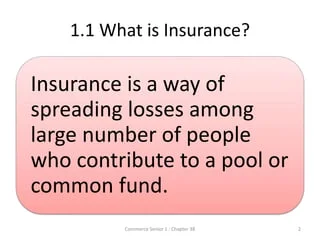The smart Trick of Pacific Prime That Nobody is Discussing
Wiki Article
Indicators on Pacific Prime You Should Know
Table of ContentsPacific Prime Things To Know Before You BuySome Ideas on Pacific Prime You Should KnowThe Pacific Prime DiariesWhat Does Pacific Prime Mean?Some Ideas on Pacific Prime You Should Know

This is due to the fact that the data were gathered for a duration of strong economic efficiency. Of the estimated 42 million individuals that were uninsured, almost concerning 420,000 (regarding 1 percent) were under 65 years old, the age at which most Americans come to be qualified for Medicare; 32 million were adults between ages 18 and 65, about 19 percent of all adults in this age; and 10 million were kids under 18 years old, concerning 13.9 percent of all children (Mills, 2000).
These estimates of the number of persons uninsured are produced from the annual March Supplement to the Present Population Survey (CPS), carried out by the Demographics Bureau. Unless or else kept in mind, nationwide estimates of individuals without health and wellness insurance and proportions of the population with different kinds of protection are based on the CPS, the most commonly utilized resource of quotes of insurance policy protection and uninsurance prices.
The Basic Principles Of Pacific Prime

Still, the CPS is particularly helpful because it produces yearly quotes relatively quickly, reporting the previous year's insurance policy protection approximates each September, and because it is the basis for a consistent collection of price quotes for more than 20 years, permitting evaluation of trends in protection in time. For these factors, in addition to the extensive usage of the CPS in other researches of insurance protection that exist in this report, we count on CPS quotes, with limitations kept in mind.

The estimate of the number of without insurance people broadens when a populace's insurance coverage status is tracked for numerous years. Over a three-year period starting early in 1993, 72 million people, 29 percent of the united state populace, were without insurance coverage for a minimum of one month. Within a single year (1994 ), 53 million individuals experienced at the very least a month without insurance coverage (Bennefield, 1998a)
Six out of every 10 uninsured grownups are themselves employed. Although functioning does improve the chance that one and one's relative will certainly have insurance, it is not a guarantee. Even participants of families with two permanent breadwinner have nearly a one-in-ten chance of being uninsured (9.1 percent without insurance rate) (Hoffman and Pohl, 2000).
The Greatest Guide To Pacific Prime
New immigrants represent a substantial proportion of individuals without medical insurance. One analysis has attributed a considerable section of the recent development in the dimension of the united state uninsured population to immigrants who arrived in the country between 1994 and 1998 (Camarota and Edwards, 2000). Recent immigrants (those who concerned the United States within the past four years) do have a high price of being without insurance (46 percent), yet they and their youngsters make up simply 6 percent of those without insurance country wide (Holahan et al., 2001).The partnership in between medical insurance and access to care is well established, as documented later on in this phase. Although the partnership in between medical insurance and health and wellness results is neither direct nor straightforward, an extensive clinical go right here and wellness solutions study literary works links medical insurance protection to better accessibility to care, much better high quality, and improved personal and populace wellness condition.
Degrees of analysis for examining the effects of uninsurance. This conversation of medical insurance coverage focuses largely on the U.S. populace under age 65 because virtually all Americans 65 and older have Medicare or various other public coverage. It focuses particularly on those without any kind of health and wellness insurance policy for any size of time.
Pacific Prime Can Be Fun For Anyone
The problems dealt with by the underinsured are in some aspects comparable to those faced by the without insurance, although they are generally much less serious. international health insurance. Uninsurance and underinsurance, nonetheless, involve noticeably different plan issues, and the methods for addressing them might vary. Throughout this study and the five reports to adhere to, the major focus gets on persons with no health insurance and thus no aid in spending for healthcare past what is offered through charity and safeguard organizations
Health and wellness insurance is a powerful aspect influencing receipt of treatment because both patients and medical professionals reply to the out-of-pocket cost of solutions - https://pxhere.com/en/photographer/4223924. Wellness insurance coverage, nonetheless, is neither required nor enough to access to medical solutions. Nevertheless, the independent and direct effect of health and wellness insurance coverage on accessibility to health and wellness services is well developed.
Others will certainly obtain the health and wellness care they need even without medical insurance, by spending for it expense or seeking it from service providers that use care totally free or at highly subsidized rates. For still others, medical insurance alone does not make certain receipt of care because of various other nonfinancial barriers, such as an absence of healthcare companies in their neighborhood, limited access to transportation, illiteracy, or etymological and social distinctions.
The 10-Second Trick For Pacific Prime
Formal research study about without insurance populations in the United States dates to the late 1920s and early 1930s when the Committee on the Price of Healthcare created a series of records regarding funding doctor workplace brows through and hospitalizations. This issue became salient as the varieties of clinically indigent climbed up throughout the Great Anxiety.Report this wiki page